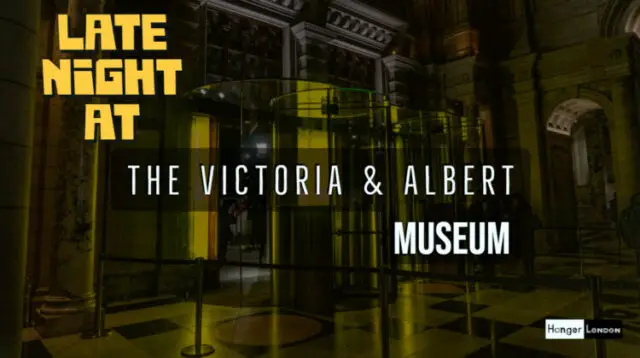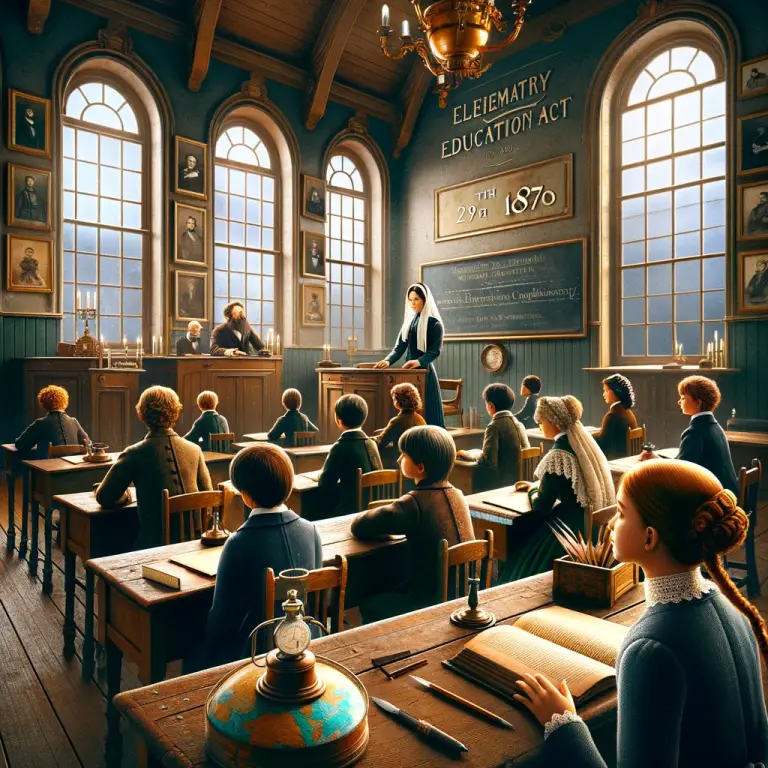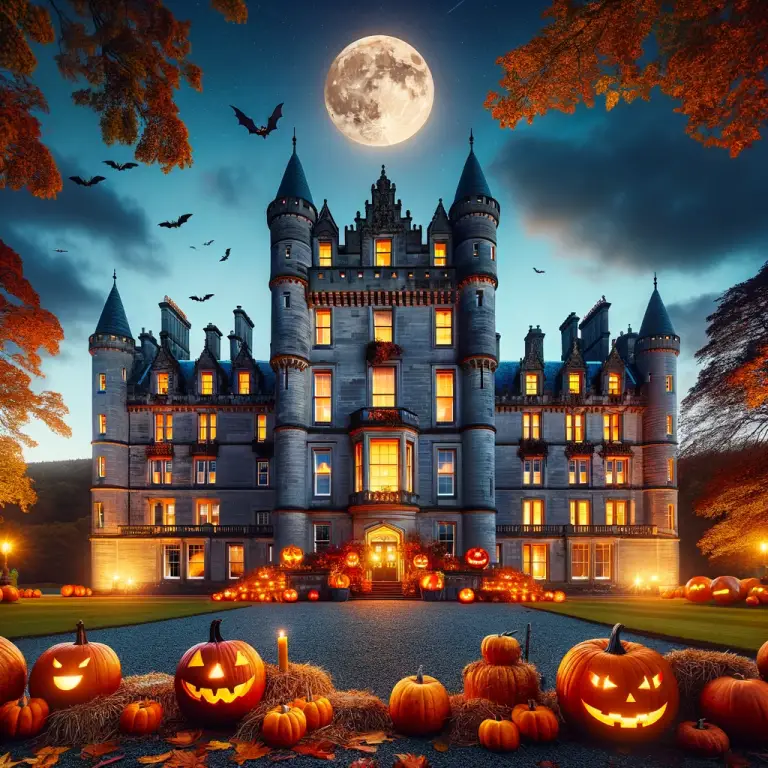The Victoria and Albert Museum, commonly referred to as the V&A Museum, is a world-renowned institution that houses one of the largest collections of decorative arts and design in the world. With over 2.3 million objects on display, it’s no surprise that the museum attracts millions of visitors every year. However, what many people don’t know is that the museum is also open for late-night visits, allowing visitors to experience the museum in a completely different way.
Last Friday of every month (except January, May, and December).
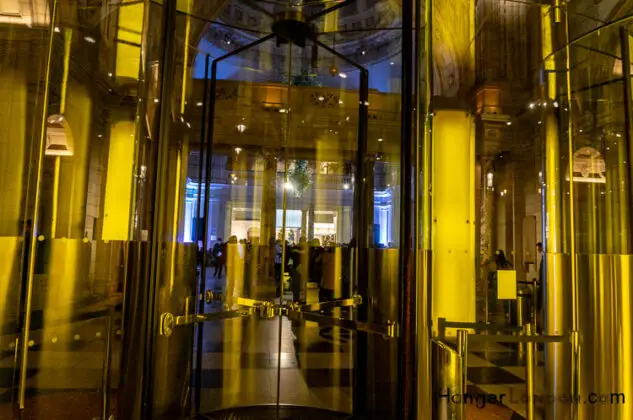
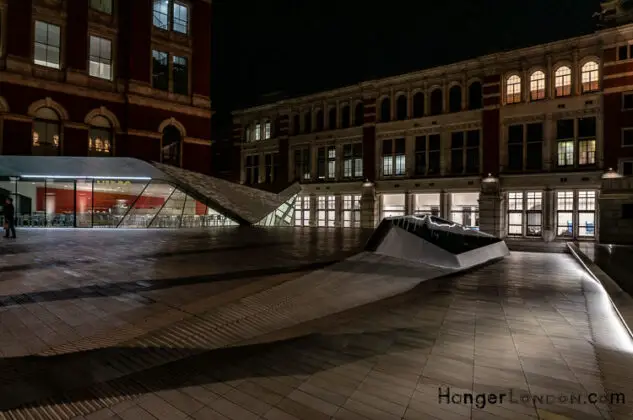
A Night at the Museum: Exploring the V&A After Hours
Late-night at the V&A Museum is a unique experience that offers visitors a chance to explore the museum’s exhibitions and galleries after hours. The museum is open until 10 pm on Fridays, which gives visitors the opportunity to enjoy the collections in a more relaxed and peaceful atmosphere. The museum’s lighting is also adjusted to create an ambiance that is different from the usual daytime experience.
The museum is open to browse, as you would on a normal visit, there are themed evenings which are usually run on the last Friday of the Month, with a few exceptions – end of December and May.
When there is no theme night there seems a quieter ambiance around the museum, it is more relaxed and the lighting seems more subdued in places. The nighttime experience is one for browsing, peeking down the corridors to view the splendour in terms of their interior design and showcases.
The V&A Museum is also famous for its architecture, and the late-night experience is an excellent time to appreciate it. The museum’s stunning Victorian building is beautifully lit up at night, creating a magical atmosphere. The courtyard and the surrounding areas are also illuminated, making it an ideal spot for a romantic evening stroll.
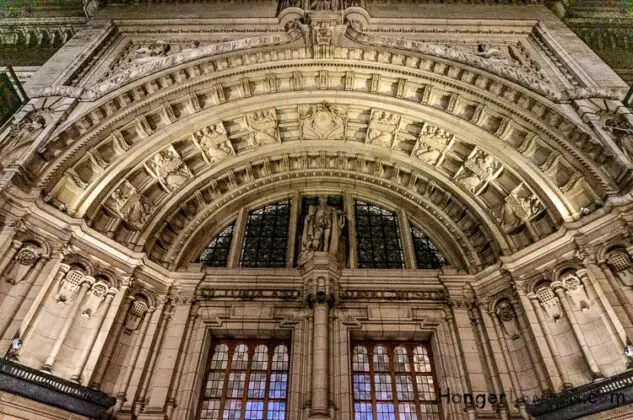
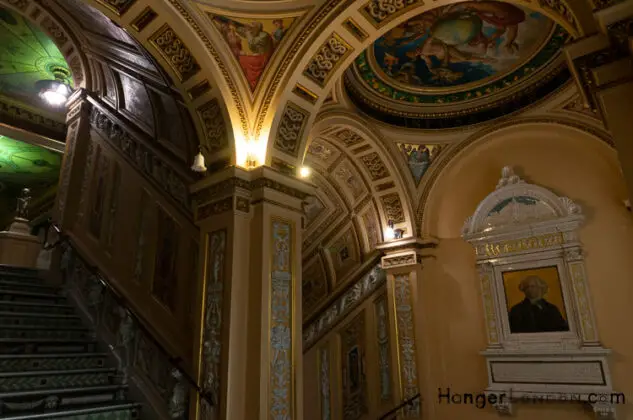
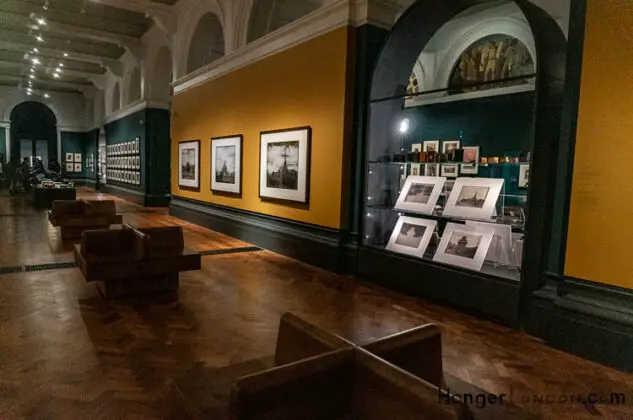
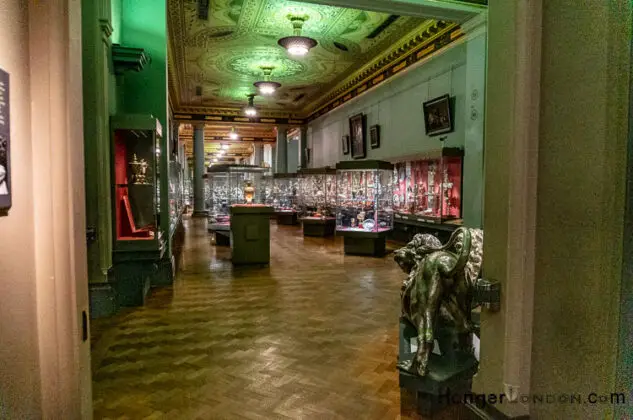
Late Drinks and a Live DJ
This is where people were congregating for drinks, and a live DJ was there with a sound system that bellowed throughout the larger halls behind the front desk area, quite a unique experience. Check the venue what is on
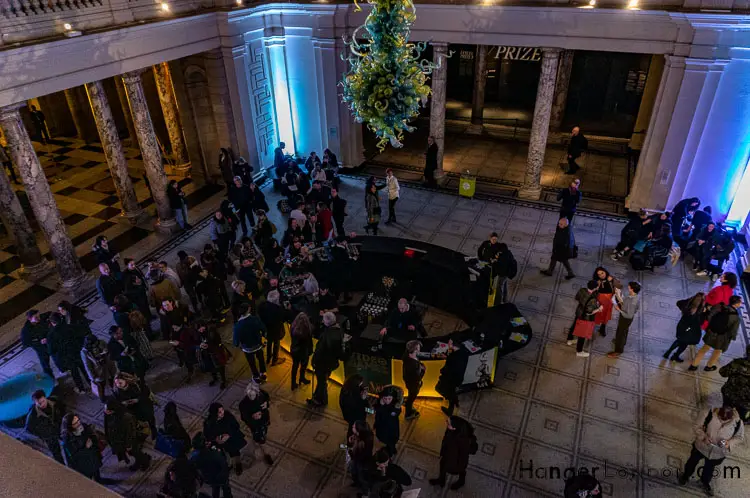
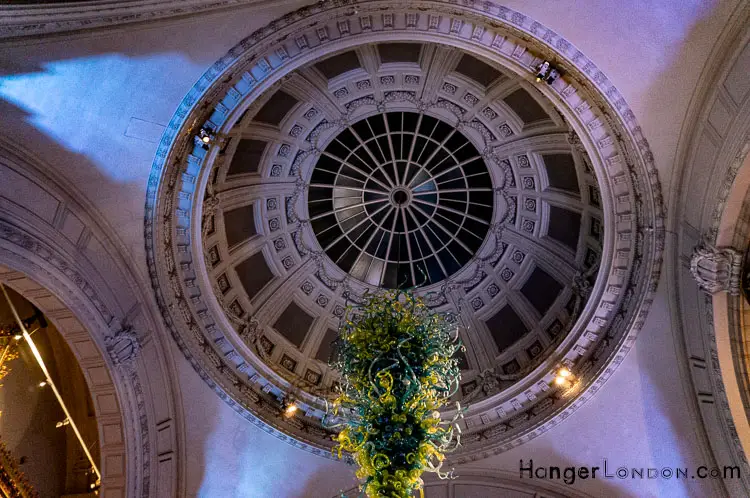
Benefits of a Late-Night Visit
A great reason to visit the V&A Museum late at night is that it is less crowded. During the day, the museum can get very busy, with visitors jostling to get a glimpse of their favourite exhibits. However, during the late-night opening hours, the museum is much quieter, allowing visitors to enjoy the collections at their own pace. The ambiance and feel of this museum at night do add something quite special to the whole experience.
The Silver section at the V&A
This gallery was opulent and had sections of historic times and designs of silver from that period.
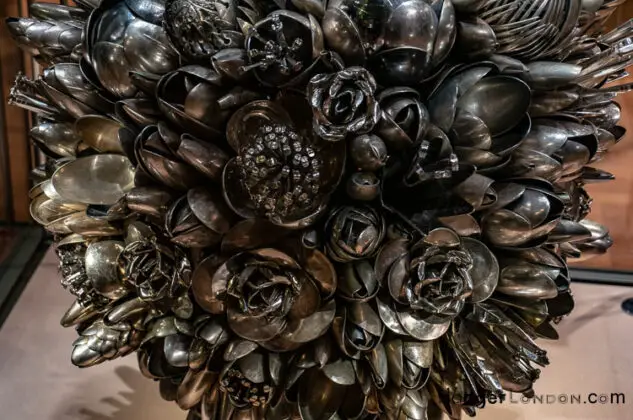

The museum (V&A) in London is home to a magnificent collection of stained glass windows that spans over 800 years of history. The collection comprises over 200 stained glass panels, ranging from small medieval fragments to large-scale Victorian windows. The museum’s stained glass collection is one of the most comprehensive in the world and includes works by some of the greatest masters of the art form, such as William Morris, Edward Burne-Jones, and Charles Eamer Kempe.
One of the highlights of the V&A’s stained glass collection is the spectacular Great West Window, which was designed by the Pre-Raphaelite artist Edward Burne-Jones and made by the William Morris company. The window, which measures over 10 meters high, depicts the Apocalypse and the Last Judgment. It’s vibrant colors and intricate details make it one of the most remarkable examples of Victorian stained glass art. Other notable works in the collection include a series of 13th-century panels from Canterbury Cathedral, 14th-century windows from York Minster, and a 16th-century panel from the Chapel of King’s College, Cambridge. Together, these works demonstrate the evolution of stained glass art through the centuries and showcase the incredible skill and creativity of the artists who created them.
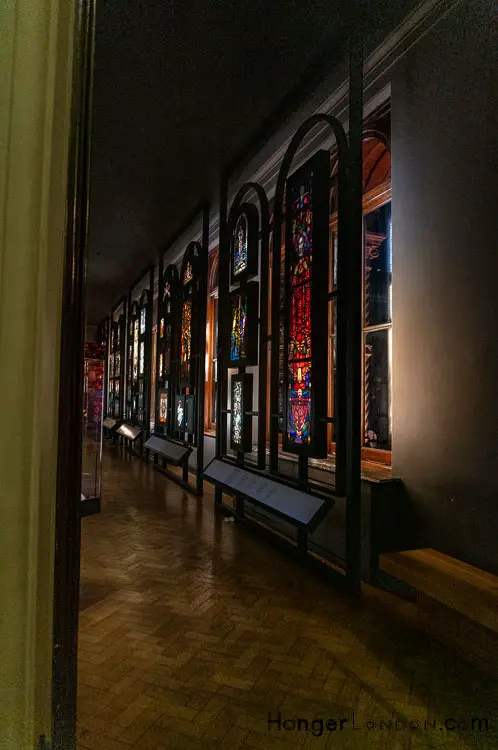
The Sir Paul McCartney Family donation room at the V&A
Paul McCartney’s room at the V&A Museum is a fascinating exhibit that showcases the life and career of one of the most iconic figures in music history. The room is designed to give visitors a glimpse into the world of McCartney, featuring a wide range of artifacts that span his entire career. Some of the highlights of the exhibit include original handwritten lyrics to some of his most famous songs, such as “Hey Jude” and “Yesterday.” There are also a variety of instruments on display, including guitars, basses, and pianos, many of which were used by McCartney himself.
The exhibit also features a number of personal items, such as photographs, letters, and even a suit that McCartney wore during his days with The Beatles. The attention to detail in the exhibit is remarkable, with each item carefully curated to provide a comprehensive picture of McCartney’s life and work. Overall, the room is a must-see for any Beatles or McCartney fan, and it provides a unique opportunity to connect with the music and legacy of one of the most influential musicians of our time.
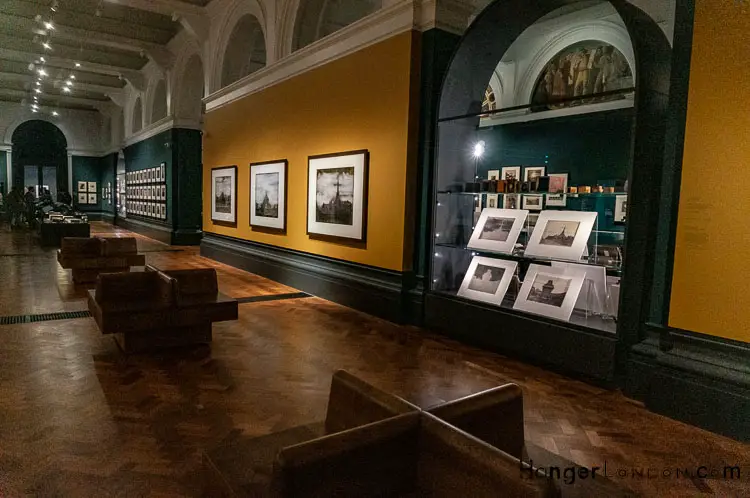
Featuring the work of Linda McCartney and her daughter Mary who also became a Photographer. Linda was the first female to shoot a rolling stone cover and had met many rich and famous in her time photographing. There are around 13 photographs with information about each.
Brownie Box Cameras at the V&A Museum
The Box Brownie camera collection at the V&A museum is a fascinating glimpse into the history of photography. The Box Brownie was one of the first affordable and easy-to-use cameras, and it revolutionized photography by making it accessible to the masses. Developed by the Eastman Kodak Company in 1900, the Box Brownie was named for its simple, box-like shape and its ease of use. It was an instant success, and within a few years, millions of people around the world were using the Box Brownie to capture their memories.
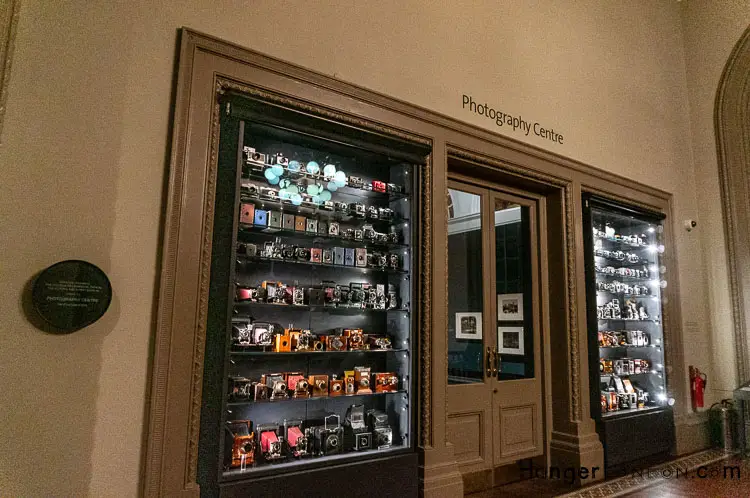
The V&A museum’s collection includes a wide range of Box Brownie models, from the original 1900 version to later models that were updated with new features and designs. The collection also includes advertisements and promotional materials from the early 20th century that showcase the Box Brownie’s popularity and appeal. Many of the cameras are in pristine condition, and visitors can see the intricate mechanisms and details that made the Box Brownie such a game-changer in the world of photography.
Overall, the Box Brownie camera collection at the V&A museum is a must-see for anyone interested in the history of photography or the evolution of technology. It’s a fascinating look at a device that changed the way we capture and remember our lives, and it’s a testament to the enduring appeal of this iconic camera. Whether you’re a photography enthusiast or simply curious about the past, a visit to the V&A museum’s Box Brownie collection is sure to be a memorable experience.
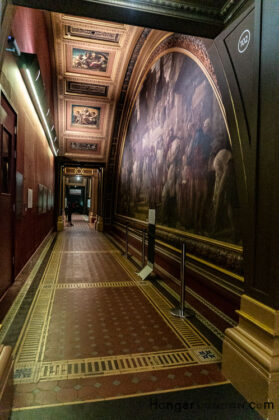


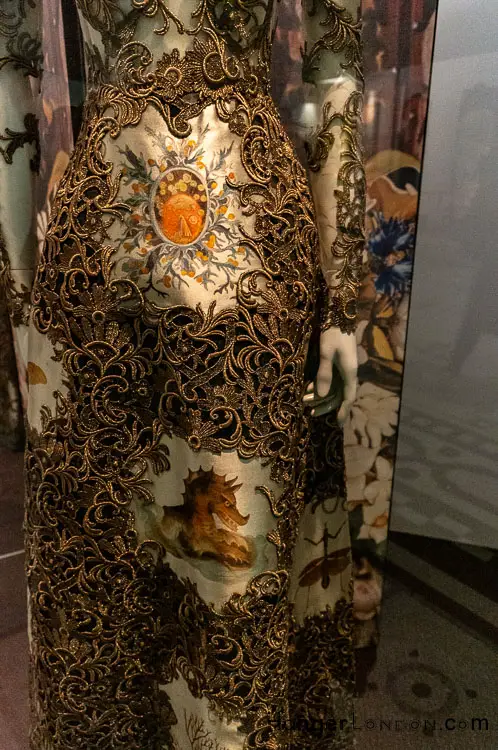
Sackler Courtyard
The Sackler Courtyard at the V&A Museum is a stunning contemporary addition to the institution’s historic building. Opened in 2017, the courtyard was designed by Amanda Levete Architects and named after the Sackler family, who generously donated £50 million towards its construction. The courtyard is a multi-level space that features a distinctive undulating canopy made of 11,000 aluminum tiles, which creates a play of light and shadow throughout the day. The canopy is supported by slender columns, which give the impression that the roof is floating above the courtyard.
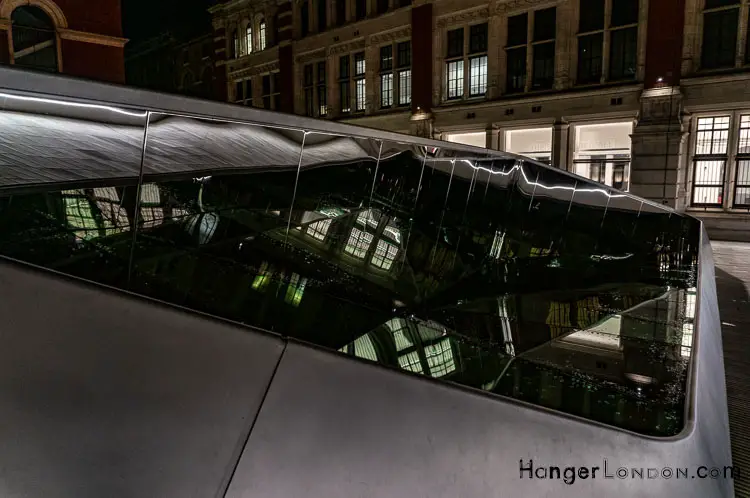
The Sackler Courtyard provides a new entrance to the V&A museum and connects the exhibition spaces in the historic building with the contemporary galleries in the Exhibition Road Quarter. The courtyard also hosts a range of public events and activities, from concerts and performances to markets and installations. It has become a popular destination for visitors and locals alike, offering a tranquil oasis in the heart of busy South Kensington. The courtyard is also home to the V&A’s first permanent outdoor exhibition space, which showcases contemporary art and design.
The Sackler Courtyard has won several awards for its innovative design and contribution to the cultural landscape of London. It has been described as a “brilliantly realized urban intervention” and a “masterpiece of structural engineering and architectural imagination.” The courtyard’s playful and organic form contrasts with the rigid geometry of the V&A’s Victorian architecture, creating a dialogue between the old and the new. The Sackler Courtyard is a testament to the power of contemporary architecture to enhance and complement historic buildings, and to create new cultural experiences that inspire and delight visitors.
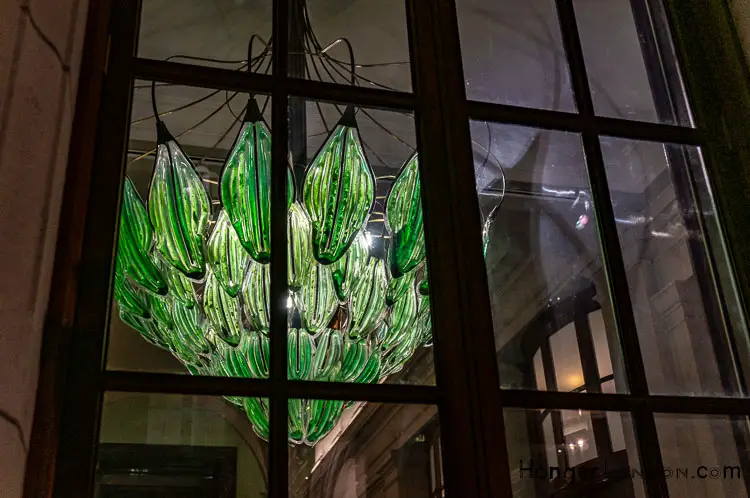
The Fascinating Story Behind the Trajan Casts
The Trajan Casts at the Victoria and Albert Museum is a collection of plaster casts of sculptures that were originally created to decorate Trajan’s Column in Rome. The casts were made in the 19th century by the Museum’s first director, Henry Cole, and were intended to serve as examples for students of art and design. The Trajan Column itself is a monumental work of art that was completed in AD 113 to commemorate the victories of the Roman Emperor Trajan over the Dacians, a people from what is now Romania. The column is decorated with a spiral frieze that depicts scenes from the Dacian Wars, and it stands 98 feet tall.
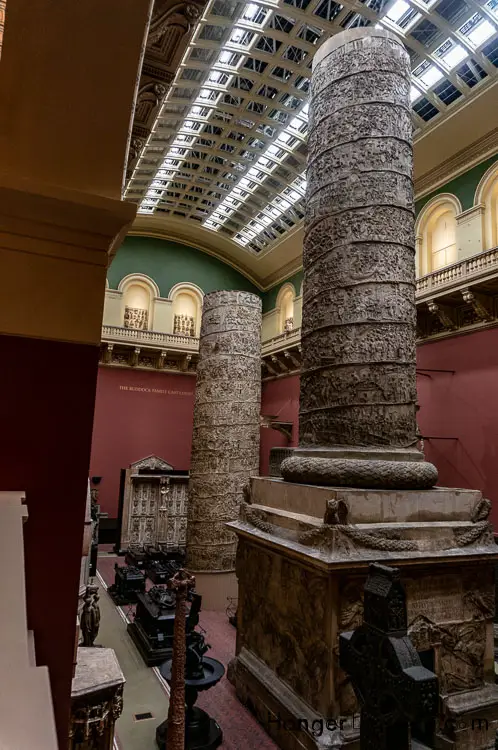
The plaster casts at the V&A are a valuable resource for anyone interested in the history of Roman art and architecture. They include over 40 sections of the column, as well as a variety of other sculptural fragments that were discovered in the vicinity of the column. The casts are displayed in a dedicated gallery at the museum and are arranged in such a way as to recreate the appearance of the column in its original form. Visitors can walk around the gallery and examine the casts from all angles, getting a sense of the scale and detail of the original sculptures.
One of the most impressive aspects of the Trajan Casts is the level of skill and craftsmanship that went into their creation. The plaster casts were made using a process that involved taking molds of the original sculptures and then casting them in plaster. This required a great deal of technical expertise, as well as an understanding of the artistic principles that underpinned the original designs. The casts are not exact replicas of the original sculptures, but rather interpretations that reflect the tastes and priorities of the Victorian era. Nevertheless, they remain an important testament to the enduring appeal of Roman art and the ongoing fascination with the ancient world.
Excellent Customer care volunteer stewards
There are lots of volunteer stewards dotted around on a late-night opening, with extensive knowledge of what is out of bounds, and how to get from one section to the other. They also know about themed events and can make suggestions.
All the volunteer stewards attempted to find us and others, a good experience or make the most of what was open.
Where to find the V&A Museum?
Cromwell Road, Royal Borough of Kensington and Chelsea, England, United Kingdom
V&A Museum WebsiteV&A Museum Website

